高教版大学英语泛读教程4(第三版)电子教案Unit 6
- 格式:pptx
- 大小:6.50 MB
- 文档页数:26
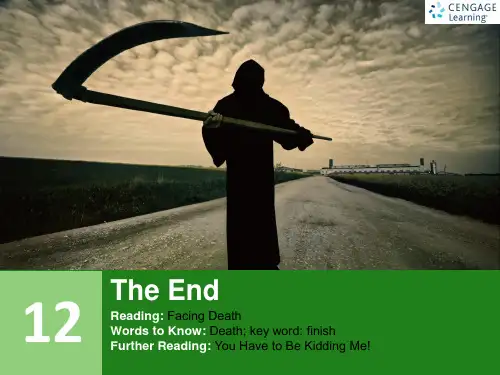
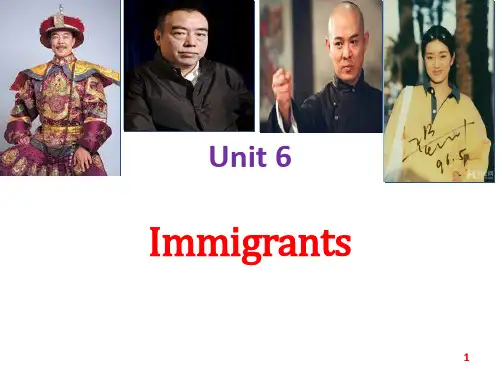
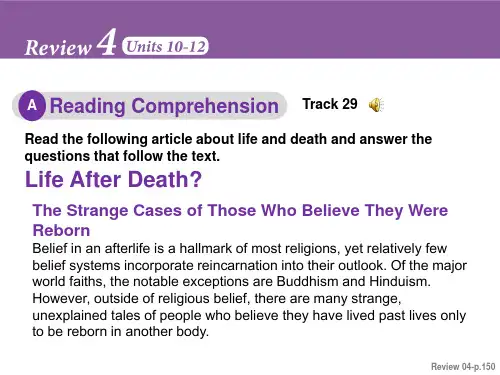
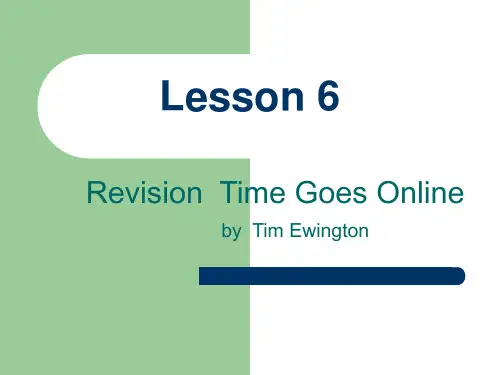
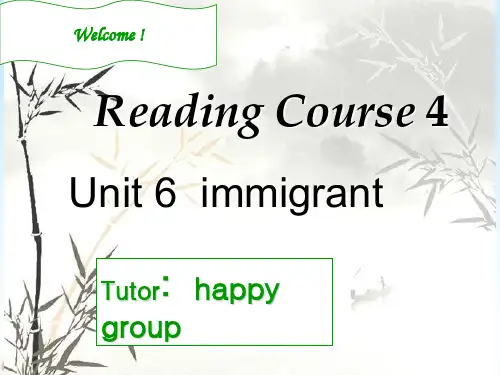
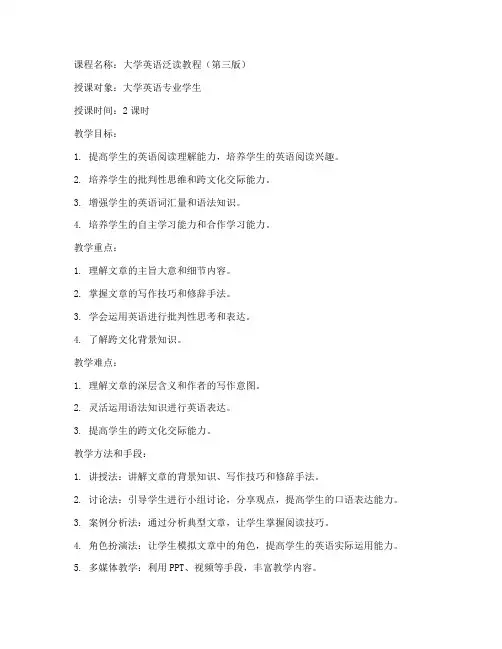
课程名称:大学英语泛读教程(第三版)授课对象:大学英语专业学生授课时间:2课时教学目标:1. 提高学生的英语阅读理解能力,培养学生的英语阅读兴趣。
2. 培养学生的批判性思维和跨文化交际能力。
3. 增强学生的英语词汇量和语法知识。
4. 培养学生的自主学习能力和合作学习能力。
教学重点:1. 理解文章的主旨大意和细节内容。
2. 掌握文章的写作技巧和修辞手法。
3. 学会运用英语进行批判性思考和表达。
4. 了解跨文化背景知识。
教学难点:1. 理解文章的深层含义和作者的写作意图。
2. 灵活运用语法知识进行英语表达。
3. 提高学生的跨文化交际能力。
教学方法和手段:1. 讲授法:讲解文章的背景知识、写作技巧和修辞手法。
2. 讨论法:引导学生进行小组讨论,分享观点,提高学生的口语表达能力。
3. 案例分析法:通过分析典型文章,让学生掌握阅读技巧。
4. 角色扮演法:让学生模拟文章中的角色,提高学生的英语实际运用能力。
5. 多媒体教学:利用PPT、视频等手段,丰富教学内容。
教学内容和过程:第一课时:一、导入1. 介绍课程背景和教学目标。
2. 引导学生思考阅读的重要性。
二、课文讲解1. 介绍文章的背景和作者。
2. 分析文章的主旨大意和细节内容。
3. 讲解文章的写作技巧和修辞手法。
三、课堂活动1. 小组讨论:让学生分组讨论文章的主题,分享各自的观点。
2. 角色扮演:让学生模拟文章中的角色,提高学生的英语实际运用能力。
四、作业布置1. 完成课后练习题,巩固所学知识。
2. 预习下一课内容。
第二课时:一、复习上节课内容1. 复习课文中的重点词汇和短语。
2. 复习文章的写作技巧和修辞手法。
二、阅读理解练习1. 阅读一篇新的英语文章,分析文章的主旨大意和细节内容。
2. 学生互相讨论,分享阅读心得。
三、语法讲解1. 讲解与课文相关的语法知识。
2. 布置语法练习题。
四、课堂活动1. 小组讨论:让学生分组讨论文章的主题,分享各自的观点。
2. 角色扮演:让学生模拟文章中的角色,提高学生的英语实际运用能力。

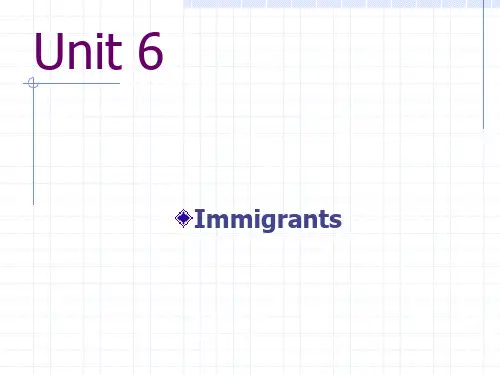
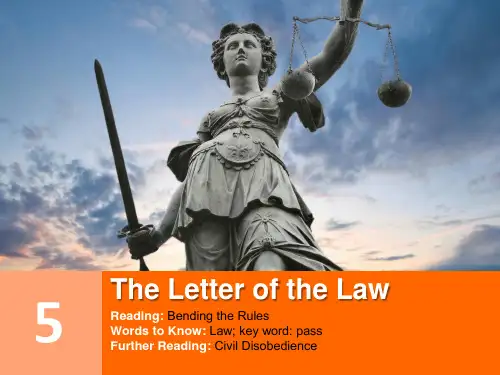
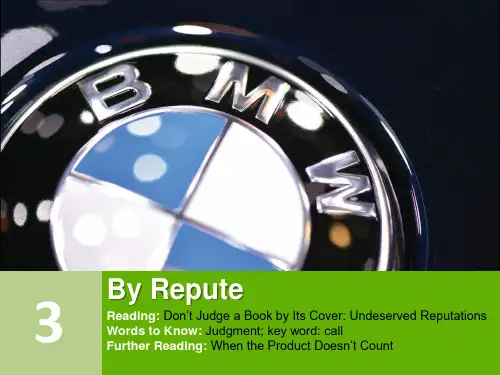
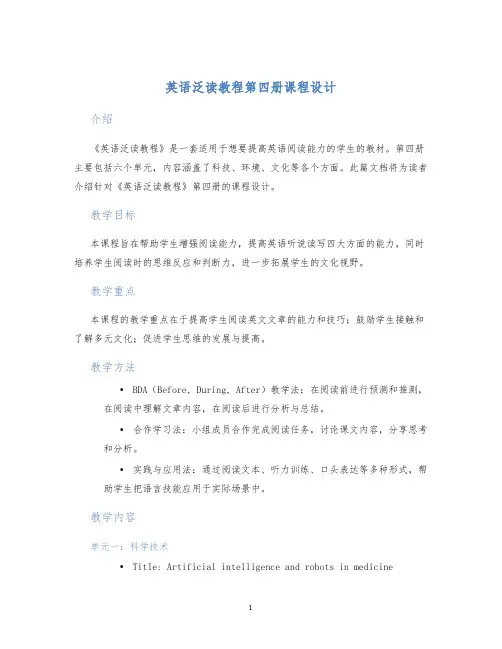
英语泛读教程第四册课程设计介绍《英语泛读教程》是一套适用于想要提高英语阅读能力的学生的教材。
第四册主要包括六个单元,内容涵盖了科技、环境、文化等各个方面。
此篇文档将为读者介绍针对《英语泛读教程》第四册的课程设计。
教学目标本课程旨在帮助学生增强阅读能力,提高英语听说读写四大方面的能力,同时培养学生阅读时的思维反应和判断力,进一步拓展学生的文化视野。
教学重点本课程的教学重点在于提高学生阅读英文文章的能力和技巧;鼓励学生接触和了解多元文化;促进学生思维的发展与提高。
教学方法•BDA(Before, During, After)教学法:在阅读前进行预测和推测,在阅读中理解文章内容,在阅读后进行分析与总结。
•合作学习法:小组成员合作完成阅读任务,讨论课文内容,分享思考和分析。
•实践与应用法:通过阅读文本、听力训练、口头表达等多种形式,帮助学生把语言技能应用于实际场景中。
教学内容单元一:科学技术•Title: Artificial intelligence and robots in medicine•Vocabulary: artificial intelligence, machine learning, robotics, diagnosis, treatment•Reading skills: scanning, skimming, inference•Discussion questions:–What is artificial intelligence?–How can robots be used in medicine?–What are the potential advantages of using robots in medicine?单元二:社会科学•Title: World hunger: causes and solutions•Vocabulary: famine, starvation, poverty, malnutrition, charity, d•Reading skills: prediction, mn idea and supporting detls, cause and effect•Discussion questions:–What is the cause of world hunger?–What can be done to help reduce world hunger?–What can individuals do to help reduce world hunger? 单元三:文化历史•Title: The history of the English language•Vocabulary: etymology, Old English, Middle English, Modern English, dialect, pronunciation•Reading skills: inference, summarize, focus on detls•Discussion questions:–How has the English language evolved over time?–What are the differences between Old English, Middle English and Modern English?–How do regional dialects differ in English?单元四:环境保护•Title: The effects of climate change on global ecosystems•Vocabulary: climate change, global warming, biodiversity, habitat, conservation•Reading skills: skimming, scanning, cause and effect•Discussion questions:–What is climate change and what causes it?–How does climate change affect ecosystems?–What can individuals do to help prevent further climate change?单元五:艺术人文•Title: The importance of music in culture•Vocabulary: genre, composition, lyrics, rhythm, melody•Reading skills: mn idea and supporting detls, inference•Discussion questions:–What is the power of music in our dly lives?–How does music reflect culture?–What are the different types of music in the world? 单元六:商务经济•Title: The impact of e-commerce on traditional businesses•Vocabulary: e-commerce, consumerism, globalization, brick-and-mortar, online marketing•Reading skills: inference, cause and effect, focus on detls•Discussion questions:–What is e-commerce?–What effects are e-commerce having on traditional businesses?–Can traditional businesses compete with e-commerce?结论本课程设计的目标在于帮助学生提高英语阅读能力,同时能培养学生综合运用语言技能的能力,如口头表达和写作。
教学目标:1. 理解并掌握本单元的生词、短语和句型;2. 培养学生阅读理解能力,提高对文章主旨、段落大意和细节的把握;3. 培养学生批判性思维能力,学会从不同角度分析文章内容;4. 提高学生的英语写作能力,学会撰写英语文章。
教学重点:1. 生词、短语和句型的掌握;2. 文章主旨、段落大意和细节的把握;3. 批判性思维能力的培养。
教学难点:1. 文章主旨、段落大意和细节的把握;2. 批判性思维能力的培养。
教学时间:2课时教学过程:第一课时一、导入1. 复习上一单元所学内容;2. 介绍本单元主题:The Power of Words(语言的力量)。
二、阅读课文1. 学生自主阅读课文,完成阅读理解题;2. 教师讲解阅读理解题的答案,并分析文章结构和写作手法。
三、词汇讲解1. 教师讲解本单元生词、短语和句型,引导学生进行翻译和造句;2. 学生分组进行词汇练习,巩固所学词汇。
四、段落大意和细节分析1. 学生分组讨论,分析文章段落大意和细节;2. 教师点评学生的分析,引导学生从不同角度分析文章内容。
第二课时一、复习上节课内容1. 学生回忆上节课所学词汇、短语和句型;2. 教师提问,检查学生对上节课内容的掌握情况。
二、写作指导1. 教师讲解英语写作技巧,强调文章结构、论点和论据的重要性;2. 学生根据本单元主题,撰写一篇英语短文。
三、写作批改1. 学生分组进行写作,相互批改;2. 教师点评学生的写作,指出优点和不足,并提出修改建议。
四、总结与作业布置1. 教师对本单元内容进行总结,强调重点和难点;2. 学生完成课后作业,巩固所学知识。
教学评价:1. 学生对生词、短语和句型的掌握程度;2. 学生阅读理解能力和批判性思维能力的提高;3. 学生英语写作能力的提升。
教学反思:1. 教师应关注学生的个体差异,针对不同学生的学习情况,给予针对性的指导;2. 教师应鼓励学生积极参与课堂活动,提高学生的英语学习兴趣;3. 教师应注重培养学生的自主学习能力,提高学生的英语综合素质。
英语泛读教程4教案Unit 1 Genius and the CraftsmanI. ObjectiveTo know the process of conceiving a story and developing it into a perfect work of art.II. Time ArrangementAbout two periods of class will be used for the analysis and discussion of the passageitself.III. Procedures:1. Greeting;2. Begin the new lesson:1) Answer the pre-reading questions orally; 2) Learn some related information;3) Allow students 3 minutes to go over the text rapidly for the main idea;4) Do the guesswork of vocabulary;5) Study the Text extensively;3. Ex. about the text;4. Fast reading passages and Ex.;5. Homework.IV. Related InformationMany people admire writers for their exquisite stories, but few of them know withwhat painstaking efforts writers work to bring a story into the word. The followingpassage discusses the process of writing a story in terms of genius and craftsman.Preview Questions(1) What do you think the meaning of ―genius‖ is?(2) What does a person do to be a genius?(3) Where does genius come from?(4) What do you think the meaning of ―craftsman‖ is?(5) What does a person do to be a craftsman?(6) What relation do you think it is between ―genius‖ and―craftsman‖?V. Emphasized PointsKey Words(1) genius(2) craftsman and craftsmanship(3) the creative function(4) conception in the dark of the mind(5) the lucid impression(6) a process of intelligent selection(7) to trust and write(8) rewriting1VI. Text Comprehension1. Structure AnalysisDivision Paragraph Main IdeaThe firstPart I three An introduction to the topic.paragraphs(1) The necessity of understanding the creative function; The restof Part II (2) the process of conceiving a story; (3) the process of passage developing a story into a perfect work of art.2. Comprehension Questions(1) Why does the writer think it necessary to the creative function?-- The writer believes that understanding of the creative function increases ourwisdom in dealing with the emerging story by making us aware of two things:genius and craftsman or craftsmanship.(2) How is a story conceived?-- A story is conceived when some experience of the present provokes thecombination of one‘s early impressions.(3) What is the principle of a story‘s life?-- Like any seed, the seed of a story has its own principle of growth: a) a processof intelligent selection, b) rarely presents itself as a whole.(4) What are the three functions of the craftsman?-- Trust, write, and generating skill.Topic for Discussion, Is it possible for a writer to start writing on impulse and then catch some good ideas flashing into his mind during the process of writing? Cite examples to illustrate your point., Do you think it is true a good story is not written but rewritten? Why or why not? 3. Teaching Points for Reference(1). So it is with the reader who comes upon an outstanding story: spellbound, he takes it to his heart, no question asked.(当读者读到一部杰出的小说时,他也会这样如痴如狂,欲将小说字字句句刻骨铭心,绝不会提出任何问题。
Unit 6Doing the Right ThingA. VocabularyDirections: Use the words from the box to complete sentences 1 to 6. Each is used one time.1. Some children become so ___________in playing video games that they actually forget to eat.2. The shark ___________ the poor seal before swallowing it whole as it sped away.3. I quit my job because it was so ___________ and repetitive that I just couldn’t do it anymore.4. Donna liked to ___________ into her pajamas on the weekend and curl up with a good book.5. The little green lizard ___________ its head from the hole in the ground before scurrying offinto a tree.6. We had a good ___________ as we browsed through some old photographs when we were inelementary school.7. A: Daddy, how did you get so smart? You know a lot about many things.B: Well, I ______ this way by going to school and studying hard.a. becameb. understoodc. arrivedd. received8. A: If you don’t get math, I can help you.B: Really? Thanks so much. I don’t ______ it at all.a. receiveb. understandc. maked. pay9. This year I decided to ______ meat and become vegetarian.a. fall inb. clean upc. put ond. give up10. During the class performance, Katie’s acting talent really ______.a. egged onb. shone throughc. gave upd. fell in11. Our teacher is very ______ since he doesn’t take attendance and usually lets us leave class early.a. laid-backb. altruisticc. vindictived. egoisticB. Grammar12. During the Chinese New Year, many people like to surround ______ terrible.a. themb. themselvesc. yourselfd. yourselves13. The teacher told the class a story about seeing a UFO, but I ______ don’t believe a word of it.a. itselfb. myselfc. yourselfd. me14. My sister is a very talented musician; she ______ to play the guitar.a. teach oneselfb. taught oneselfc. teach herselfd. taught herself15. The teacher was very happy with our exam results and said that we should be ______.a. proud of themselvesb. proud themselvesc. proud of ourselvesd. proud ourselves16. We should not take things in life too seriously and laugh ______ once in a while.a. at yourselvesb. at itselfc. ourselvesd. at ourselvesC. Reading ComprehensionDirections: Read the following excerpt from The Root of Morality and answer the questions that follow.For me, altruism is the only possible basis for morality. Of course people everywhere act from self-interest and, historically, humans have done some appalling things to one another.However, if most of us didn’t have feelings o f empathy and duty toward our fellow creatures, society would cease to function. Some people argue that we never truly act based on altruistic motives alone. For example, people who give to charity may do so to make themselves feel good or to give themselves an image of benevolence that will impress others. Conversely, people who refrain from immoral acts could be doing so from fear of looking bad, rather than pure kindness. I think this is a pretty cynical view of human interaction. Morality can’t be founded merely on the desire for praise and the fear of disgrace.17. What would be a good description of altruism?a. Being good to others and getting something back.b. Being good to others and get nothing in return.c. Doing nothing to help others.d. No information is given.18. Which of the following is believed to be true for the writer?a. People are mainly motivated by money.b. People only want to help animals.c. People can help without getting rewards.d. All of the above are true.19. The word empathy is closest in meaning to which of the following?a. understandingb. appallingc. motivatingd. interacting20. The word cynical is closest in meaning to which of the following?a. imaginativeb. benevolentc. morald. negative。